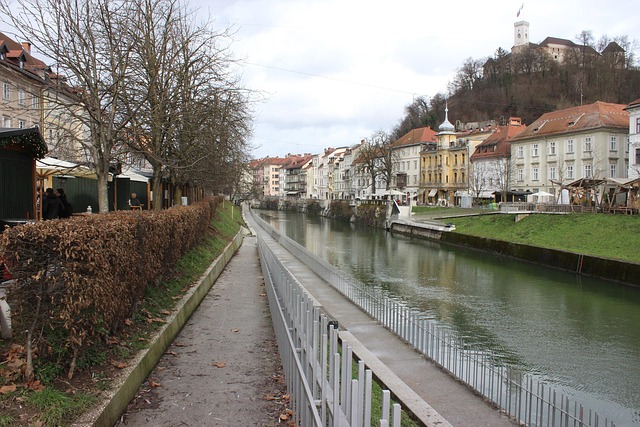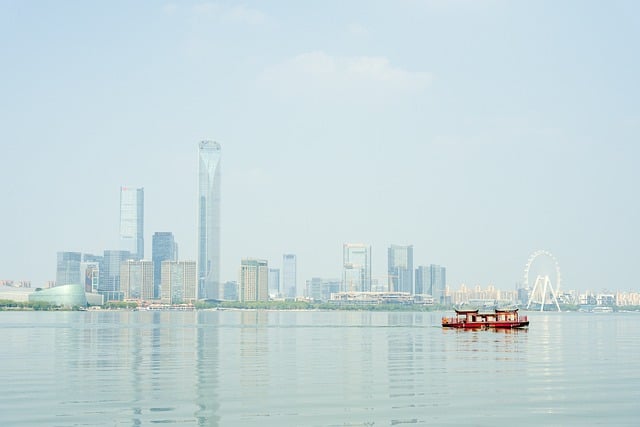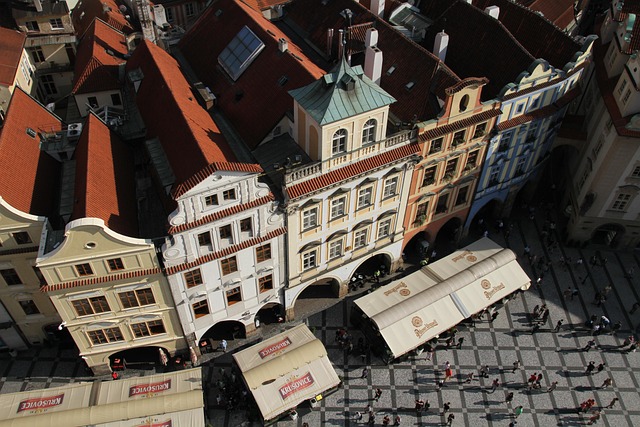
Karachi's Air Quality Index (AQI) is a vital tool for managing air pollution, with lower values indicating better quality. The city's unique challenges impact AQI readings, showing high levels of pollutants like particulate matter, nitrogen dioxide, and ozone. Regular monitoring encourages precautions on polluted days, protecting public health. Jamshed Road, affected by traffic and industry, serves as a case study for Karachi's air pollution needs, requiring strategies including stricter emission controls, electric mobility, urban greening, and citizen engagement to improve air quality and create a healthier future.
Karachi, Pakistan’s bustling metropolis, faces significant urban air pollution challenges, particularly in areas like Jamshed Road. This article delves into the complex issue of air quality, focusing on the Air Quality Index (AQI) and its impact on the city’s health. We present a case study of Jamshed Road, exploring current air pollution levels and their sources. Additionally, we offer strategic insights to improve air quality, highlighting potential solutions for Karachi’s residents.
- Understanding Air Quality Index in Karachi
- Jamshed Road: A Case Study of Urban Air Pollution
- Strategies to Improve Air Quality in Karachi's Jamshed Road Area
Understanding Air Quality Index in Karachi

The Air Quality Index (AQI) is a vital tool for understanding and communicating air pollution levels in Karachi, Pakistan. It provides a standardized measure of air quality, making it easier for residents and authorities to take informed actions. The AQI ranges from 0 to 500, with lower values indicating better air quality. In Karachi, the index often reflects the city’s unique challenges, especially during the hot summer months when pollution levels can surge due to various factors like vehicle emissions, industrial activities, and construction projects.
Karachi’s diverse geography, with its bustling streets and sprawling industrial areas, contributes to complex air quality issues. The AQI helps in monitoring these problems, such as high levels of particulate matter (PM2.5 and PM10), nitrogen dioxide (NO2), and ozone (O3). By keeping a close eye on the AQI, citizens can stay informed about days when air pollution is at its peak, encouraging them to take precautions like wearing masks or avoiding strenuous outdoor activities. This awareness is crucial for protecting public health, especially among vulnerable groups like children, the elderly, and individuals with respiratory conditions.
Jamshed Road: A Case Study of Urban Air Pollution

Jamshed Road, a bustling artery in Karachi, serves as a stark case study for urban air pollution in Pakistan. The road, known for its heavy traffic and industrial proximity, often exceeds safe air quality levels, posing significant health risks to residents. With a dense network of vehicles and nearby manufacturing units, the area experiences elevated levels of particulate matter (PM2.5 and PM10), nitrogen oxides (NOx), and volatile organic compounds (VOCs).
These pollutants not only contribute to respiratory issues and cardiovascular diseases but also create a hazy atmosphere that permeates the entire city. The situation highlights the urgent need for effective air quality management strategies, including implementing stricter emission norms, promoting public transport, greening urban spaces, and raising awareness among citizens about pollution sources and mitigation methods. By studying Jamshed Road’s challenges, Karachi can chart a course towards cleaner air and a healthier future for its inhabitants.
Strategies to Improve Air Quality in Karachi's Jamshed Road Area

The air quality in Karachi’s Jamshed Road area has been a growing concern, prompting various strategies to enhance the environment. One effective approach is to promote electric mobility by encouraging the use of electric vehicles (EVs) and establishing charging stations across the region. This shift can significantly reduce emissions from traditional gasoline-powered cars, contributing to cleaner air. Additionally, implementing stricter industrial regulations and promoting green infrastructure like vertical gardens and tree-lined avenues can help absorb pollutants.
Community engagement is another key strategy. Educating residents about the impact of littering and encouraging responsible waste management practices can make a difference. Organizing local initiatives for regular cleaning drives and promoting awareness campaigns to highlight the importance of good air quality will foster a collective effort to breathe life into Jamshed Road’s atmosphere, making it healthier for both locals and visitors alike.
Karachi, as a vibrant metropolis, faces unique challenges when it comes to air quality, particularly in areas like Jamshed Road. This case study highlights the severe impact of urban air pollution on the health and well-being of residents. However, with strategic interventions and collective efforts, there is hope for improvement. By implementing sustainable practices, promoting green spaces, and adopting cleaner technologies, Karachi can work towards a healthier future, ensuring that its citizens breathe easier and enjoy a more livable environment. Addressing air quality issues in Jamshed Road and similar urban centers is crucial for the long-term prosperity of the city.






